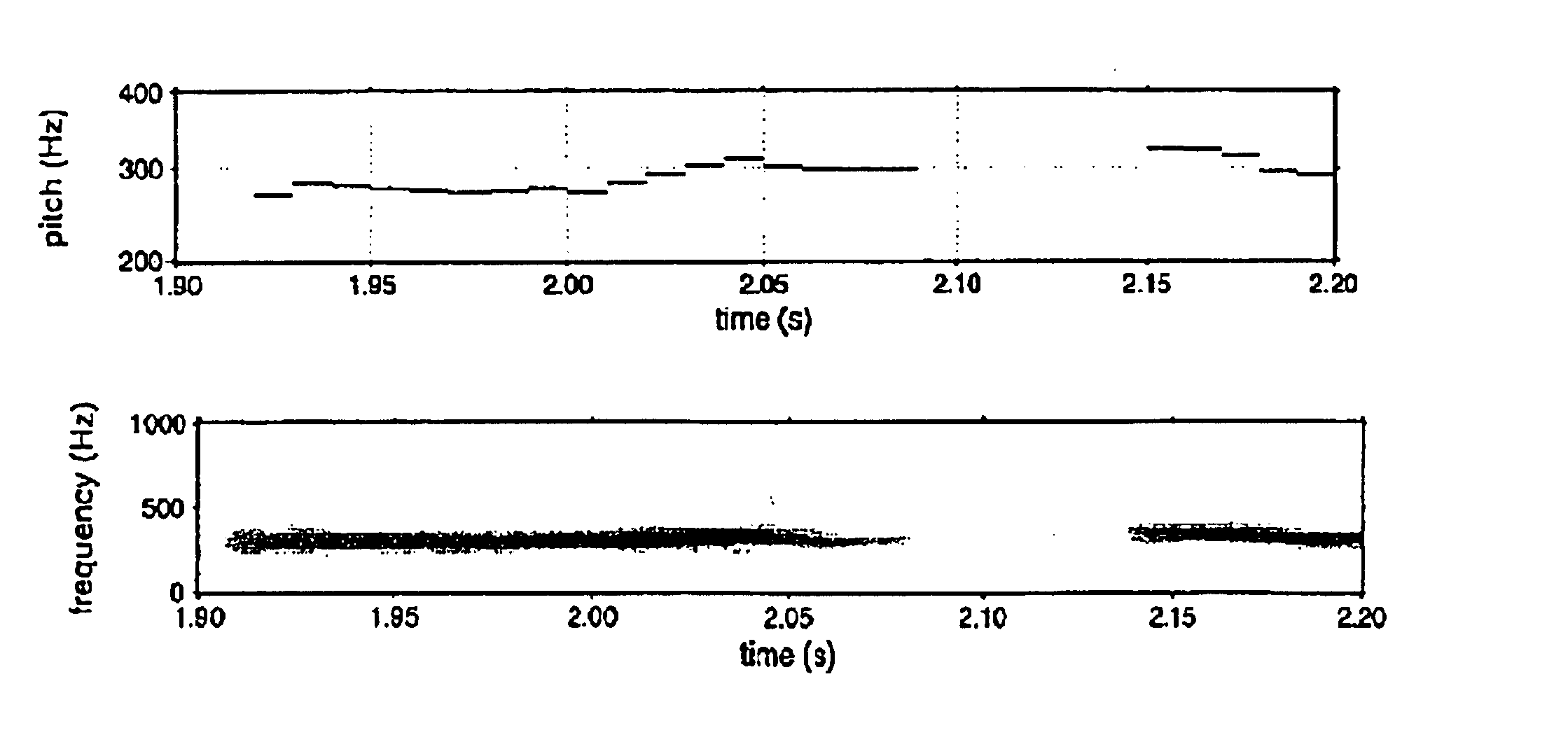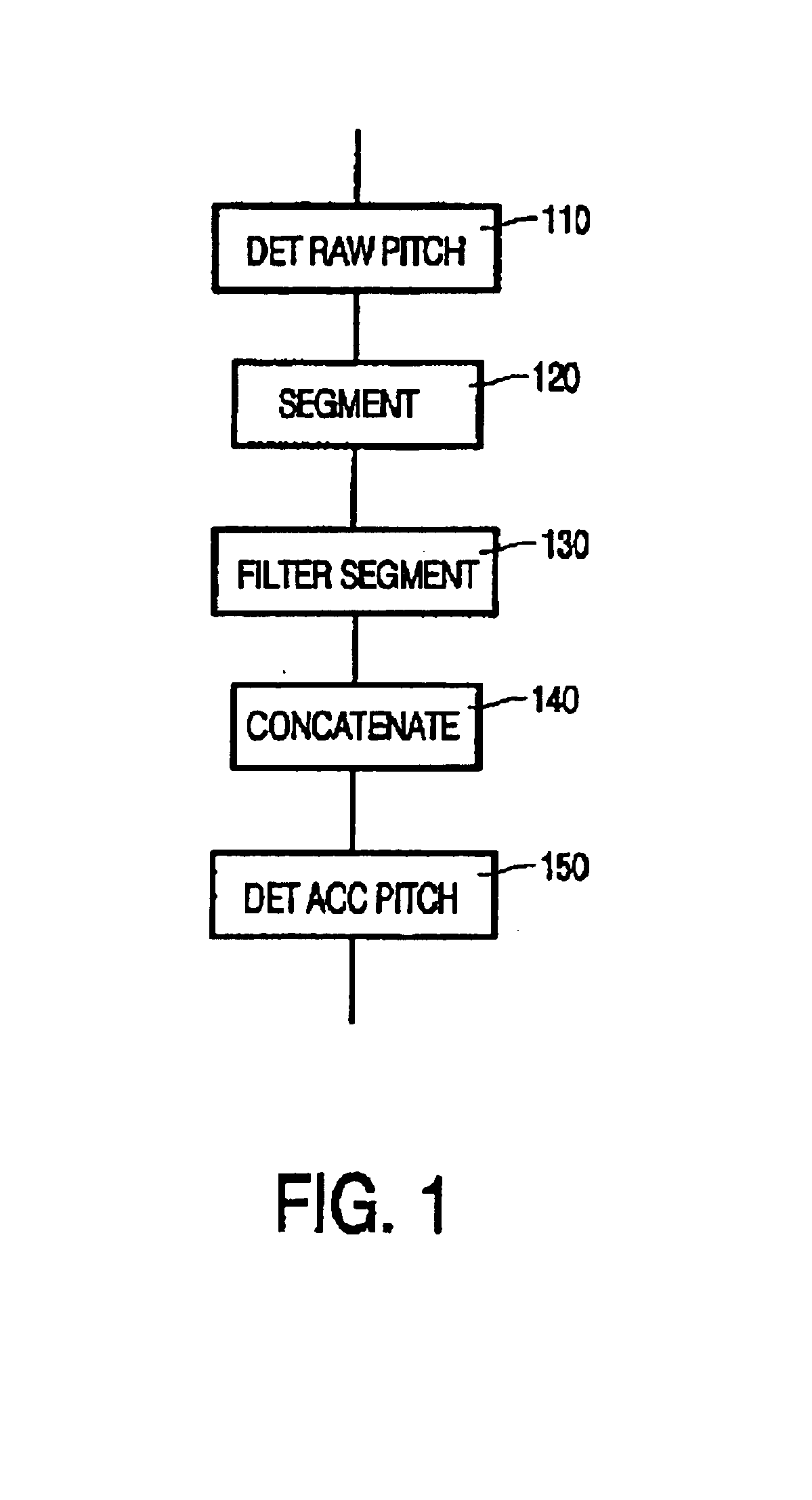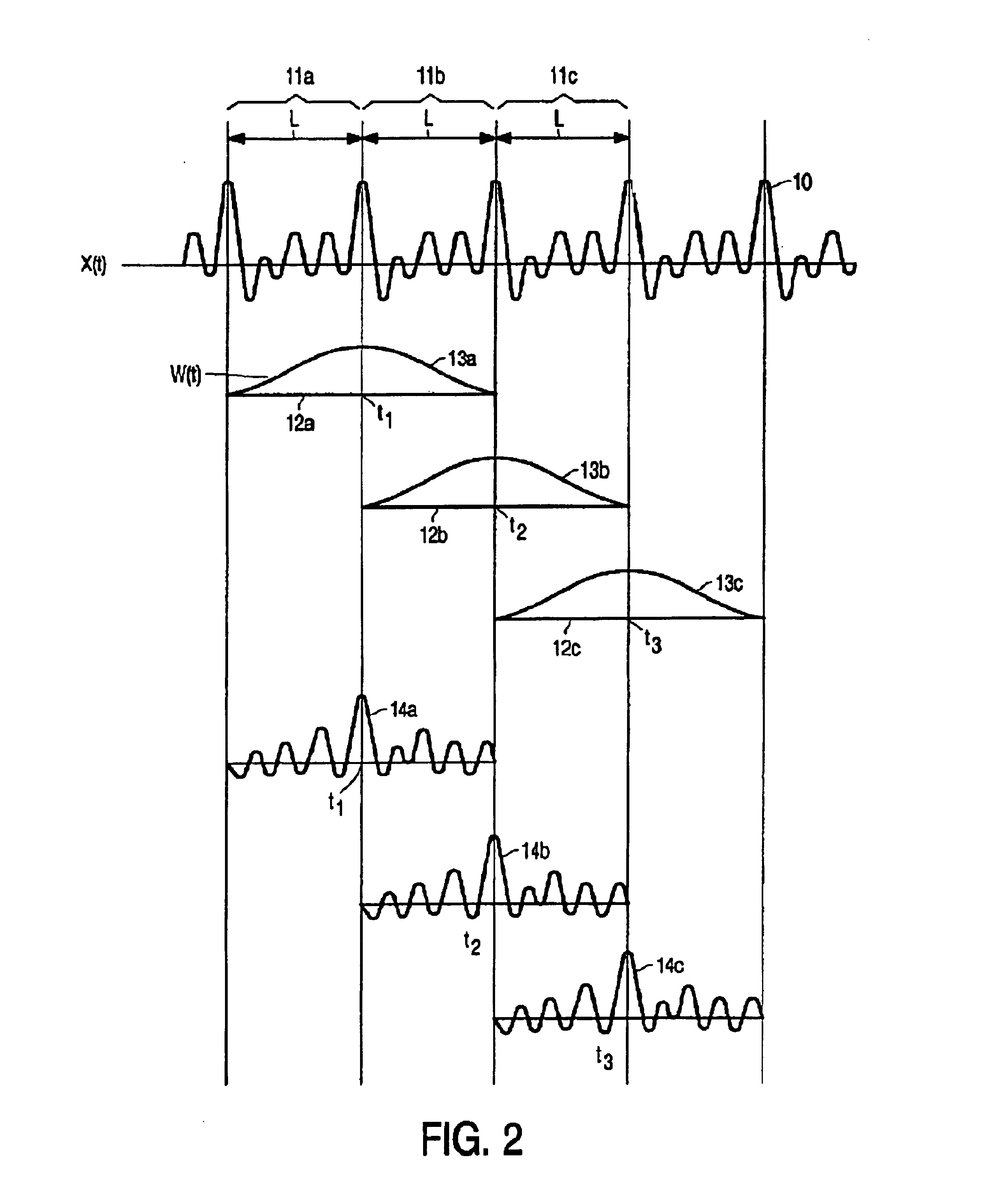Refinement of pitch detection
a pitch detection and pitch technology, applied in the field of pitch detection, can solve the problems of limiting the accuracy with which the pitch can be detected, computationally expensive calculation of error conditions, etc., and achieve the effect of increasing the resolution of sampled signals and allowing much more accurate pitch developmen
- Summary
- Abstract
- Description
- Claims
- Application Information
AI Technical Summary
Benefits of technology
Problems solved by technology
Method used
Image
Examples
Embodiment Construction
Pitch Refinement
[0038]FIG. 1 illustrates accurately determining the pitch according to the invention. In step 110, a raw value for the pitch is obtained. In principle any suitable technique may be used to obtain this raw value. Preferably, the same technique is also used to obtain a binary voicing decision, which indicates which parts of the speech signal are voiced (i.e. having an identifiable periodic signal) and which parts are unvoiced. The pitch needs only be determined for the voiced parts. The pitch may be indicated manually, e.g. by adding voice marks to the signals. Preferably, the local period length, that is, the pitch value, is determined automatically. Most known methods of automatic pitch detection are based on determining the distance between peaks in the spectrum of the signal, such as for instance described in “Measurement of pitch by subharmonic summation” of D. J. Hermes, Journal of the Acoustical Society of America, Vol. 83 (1988), no.1, pages 257-264. Typically ...
PUM
 Login to View More
Login to View More Abstract
Description
Claims
Application Information
 Login to View More
Login to View More - R&D
- Intellectual Property
- Life Sciences
- Materials
- Tech Scout
- Unparalleled Data Quality
- Higher Quality Content
- 60% Fewer Hallucinations
Browse by: Latest US Patents, China's latest patents, Technical Efficacy Thesaurus, Application Domain, Technology Topic, Popular Technical Reports.
© 2025 PatSnap. All rights reserved.Legal|Privacy policy|Modern Slavery Act Transparency Statement|Sitemap|About US| Contact US: help@patsnap.com



